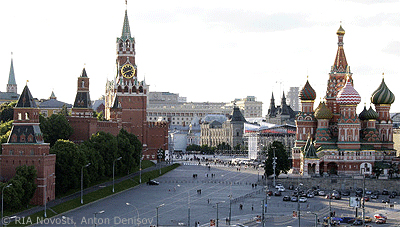Despite Appearances, Russian Society is Neither Patriarchal nor Traditional, Savvin Says

(Paul Goble – Window on Eurasia – Staunton, May 17, 2018)
Many assert that Russian society is both patriarchal and traditional as if this is something self-evident, Dimitry Savvin says; but in fact, Russian society is neither. Rather, it is something that, while externally similar to traditional and patriarchal society, in fact is the direct opposite.
That is because, the Russian blogger says, “the nature of the social system in the Russian Federation has an entirely different origin and entirely different qualities” (harbin.lv/kogda-gosudarstvo-stanovitsya-papoy). Unfortunately, both liberals and conservatives believe Russian society is now patriarchal and traditionalist, although they give opposite assessments of it..
But “even the most superficial review shows,” Savvin says, that while there may be some patriarchal and traditionalist elements in Russian society, they are invariably in “truncated and mutilated form” and thus the society should not be described as it so often is. It is in fact something very different.
At the basis of a traditional patriarchal system is a family which corresponds to it, one in which the man is the unchallenged head and in which families are both large and multi-generational. That was typical of Russian society in the 19th century; it is not typical of Russian society today, Savvin continues.
Families today are fragile with more than half ending in divorce. Multi-generational families are almost unheard of. And single-parent families are increasingly the norm. Sometimes grandparents help out and so there is the appearance but not the reality of the multi-generational family of the past.
Further, while one cannot deny the numerous cases of family violence in which men beat or even kill their wives, there are other developments that point to a transformation of gender roles. The Russian government follows a policy of “‘positive discrimination'” against men, Savvin says. And women form significant shares of many professions and even politics.
Many women now earn as much or more than their husbands, and thus rather than calling Russian society traditional and patriarchal, one should speak of it as being one of many societies passing through the transition from such a society to a typical mass society in which some traditional roles remain but are of decreasing importance.
Religion has lost the key role it played earlier. The number of genuine and practicing believers in Russia is “extremely small,” certainly only a few percent. Few Russians follow church practices or church teachings on such issues as abortion, premarital sex, or civil marriage as they did a century ago.
And finally, “in any traditional society, each of its representatives is included not in one but in several hierarchies and is the bearer of a whole line of identities. He is a member of his family and his church congregation or other religious community and also a member of a local community … the bearer of a specific dialect” and one who identifies with his region.
Almost nothing of that is left in present-day Russia, Savvin argues. There has been a mass destruction of all these traditional identities and the homogenization of the population linguistically, religiously, culturally and so on.
What then gives rise to “the illusory aroma of ‘traditionalism”? The answer is “simple.” Both traditionalism and patriarchal characteristics are associated by present-day intellectuals “with oppression, prohibition and force. All of that exists in the Russian Federation in excess. But the mechanism of the interrelationship of the society and the state is not traditional.”
To a significant degree, Savvin argues, “one can say that in the Soviet and the neo-Soviet period were realized the formula of Mussolini: ‘Everything in the state, nothing outside the state, nothing against the state.'” Indeed, Russia has achieved that “in a much more radical form than the Duce imagined.”
“The communist regime consciously … destroyed religion, ethno-national identity, the family and private property. And put in their place a totalitarian state. All traditional hierarchies and forms of identity were wiped out. And as a result, an extremely atomized society, on the one hand, and an all-powerful state, on the other, remained.”
There is thus “only the particular human unit and the state, and the latter, given the lack of an alternative, has swallowed up everything: the Motherland, religion, and the large family.” One result is “that for the Soviet and neo-Soviet man, the terms ‘Motherland’ and ‘state’ are synonyms,” Savvin says.
“‘Good religion in the case of the Russian Federation is ‘correct’ Orthodoxy” because the state says so. And all the personal needs of the individual are the province of the state rather than any other agency.
That pattern helps to explain why “the chief of state in such a situation can appear like a Tsar. But in reality, he plays a much larger role than a monarch in a Christian country. He leads not one hierarchy but the only one – that of the state.” He is thus not simply a dictator but a moral, intellectual, spiritual and even personal leader.
Present-day society in Russia is thus “not in any case traditional and patriarchal. Everything is much worse: this is a society dominated by totalitarian consciousness. And those who try to change it by attacking traditional institutions are in effect not only beating against the wrong targets but strengthening that totalitarian system.
“Unfortunately,” Savvin concludes, “very few today see this for the simple reason that the opponents of this system are themselves the products of it.”
[Article also appeared at windowoneurasia2.blogspot.com/2018/05/despite-appearances-russian-society-is.html]
